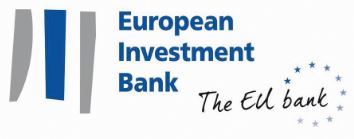European Investment Bank: “Vienna Initiative” Keeps Credit Flowing
 International financial institutions have joined forces to help calm economic turbulence and avert a collapse in the provision of credit to Central and South East European countries. Now in its second phase, the “Vienna Initiative” by the European Investment Bank, World Bank and European Bank for Reconstruction and Development has proven vital to safeguarding financial stability and supporting growth and jobs in Emerging Europe.
International financial institutions have joined forces to help calm economic turbulence and avert a collapse in the provision of credit to Central and South East European countries. Now in its second phase, the “Vienna Initiative” by the European Investment Bank, World Bank and European Bank for Reconstruction and Development has proven vital to safeguarding financial stability and supporting growth and jobs in Emerging Europe.
As the global financial crisis developed into a full-blown economic crisis across much of the European Union in 2008 and 2009, the EIB was asked by its shareholders – the EU Member States – to respond in a counter-cyclical manner and significantly increase its lending to the real economy.
This sharp increase – the EU Bank’s “extraordinary response to extraordinary times” – took place, in the first instance, within the framework of the European Economic Recovery Plan adopted by EU leaders in late 2008. This engagement reflected the need for enhanced solidarity and social justice at times of hardship, when those already vulnerable require increased assistance.
“The EIB has assisted economic development in the region for several decades.”
The recovery plan established a twin-track approach – short-term action to avert a full-blown collapse of the economies and banking systems, and long-term measures to reinforce the financial architecture and boost competitiveness, with the ultimate aim of putting Europe on a path of smart, sustainable and inclusive growth.
Part of the initial anti-crisis response of the EIB focused on countries in Central and South Eastern Europe, a mixture of the EU’s newest member states and emerging economies hard hit by the downturn as capital inflows slowed and export markets collapsed. The EIB has assisted economic development in the region for several decades, providing not only vast sums of money in loans but also indispensable technical and financial advice to support capacity building and ensure successful implementation of large-scale investments.
Given this experience, it was natural for the EIB to act as a key contributor to the “Vienna Initiative” seeking to safeguard the stability of the financial sector. The goal of the initiative, launched in January 2009 together with the EBRD, the European Commission, World Bank, IMF and other financial institutions, was to prevent a withdrawal of international banking groups with large exposures in the region and maintain a steady flow of credit to the economies affected, in part by securing funding from the EIB and its fellow public financiers.
“The policy choices made during the current crisis will have an impact on the economy for years to come. And we can say that our institutions have coped well under extremely difficult operational circumstances.”
This plan was integrated with the IMF and EU macro-financial support programs. In return for the commitment of countries to fiscal consolidation and for financial support from the international financial institutions, large multinational banks active in the region pledged to keep local subsidiaries capitalized so that they could continue lending to businesses and households.

Warsaw Metro: EIB supports upgrade with EUR 139 million.
The initial pledge by the EIB, World Bank and EBRD – EUR24.5 billion for crisis-related support to the financial sector over 2009-2010 – was exceeded. By end-2010, the three institutions provided loans of more than EUR33 billion under the Joint IFI Action Plan stemming from the Vienna Initiative. Around that time, economic prospects of the countries in the region started to improve, with positive implications for the banking sector.
The recovery was, however, short-lived. As the sovereign debt crisis intensified in the euro area in 2011, turmoil on the financial markets coupled with anticipation of Basel III led to the implementation of new prudential standards by a number of cross-border financial institutions with significant exposures in Central and South Eastern Europe. This gave rise to a fresh wave of concerns about the level of capitalization of subsidiary banks. At the same time, the paradigm of doing business in the region changed, with the lending by subsidiaries increasingly financed by domestic funds.
Faced with these new challenges, the “Vienna Initiative” evolved into “Vienna 2.0,” addressing not only a number of specific banking issues such as the alignment between home and host regulators, but also, in a more targeted way, seeking to help rekindle economic growth after five years of sluggish performance. The new Joint Action Plan for Growth in Central and South Eastern Europe launched in November 2012 reaffirmed the commitment of the EIB, World Bank and EBRD to the region. Lending for growth and jobs has been a key mission of the EIB since its inception in 1958 as a public bank of the EU, making it well-placed to take the lead in the action plan.
The EIB Group – comprising also the European Investment Fund, a specialist provider of risk finance for SMEs – will contribute two thirds of the EUR30 billion in long-term loans pledged by the three financiers for 2013-2014 to support SMEs; renewable energy and energy efficiency; large infrastructure project; research and innovation; and the knowledge economy.
Initial results show that we are fully on track meeting this target. A number of global loans for SMEs was signed recently with partner banks in Bosnia-Herzegovina, FYROM, Bulgaria, Latvia and other countries covered by the initiative; railways and motorways are being built and refurbished across the region with the help of EIB funds; almost EUR1 billion has been provided for R&D activities in Polish research institutes, universities and business enterprises.

EIB supports construction of high-performance power station in Poland.
The value of the participation of our institutions lies not only in the provision of large volumes of competitively priced senior debt at long tenors. Our presence also gives confidence to other investors – indeed, in the midst of the economic downturn, a number of important projects would not have reached financial close without participation of the EIB or fellow public banks.
The policy choices made during the current crisis will have an impact on the economy for years to come. And we can say that our institutions have coped well under extremely difficult operational circumstances. Calls for a multilateral response have not fallen on deaf ears, as illustrated by the various synergies and coordinated actions in the region. We have played a counter-cyclical role, complementing national support packages and granting access to attractively priced loans in countries with insufficient resources to stimulate their economies and offer social protection to their people.
About the Author
 Wilhelm Molterer is a Vice-President and Member of the Management Committee of the European Investment Bank. Among other responsibilities, he oversees lending to Germany and Austria, the Eastern Partnership countries and EU cohesion. He also is the EIB’s Governor to the EBRD.
Wilhelm Molterer is a Vice-President and Member of the Management Committee of the European Investment Bank. Among other responsibilities, he oversees lending to Germany and Austria, the Eastern Partnership countries and EU cohesion. He also is the EIB’s Governor to the EBRD.
Mr Molterer took up his duties at the EIB in 2011 after a long career in Austrian politics which included the posts of Vice-Chancellor and Federal Minister of Finance (2007-2008); Federal Minister of Agriculture, Forestry, Environment and Water Management (1994-2003); and two decades as Member of Parliament.
What is the EIB?
The EU’s bank: The EIB is the European Union’s bank – the only bank owned by and representing the interests of the European Union Member States.
As the largest multilateral borrower and lender by volume, the EIB provides finance and expertise for sound and sustainable investment projects which contribute to furthering EU policy objectives. More than 90% of its activity is focused on Europe, but it also implements the financial aspects of the EU’s external and development policies.
Lending, Blending and Advising
• Lending: The vast majority of EIB financing is through loans, but we also offer guarantees, microfinance, equity investment, etc.
• Blending: EIB support helps unlock financing from other sources, particularly from the EU budget. This is blended together to form the full financing package.
• Advising: Lack of finance is often only one barrier to investment. The EIB can help with administrative and project management capacity which facilitates investment implementation.
Priorities
The EIB supports projects that make a significant contribution to growth, employment, economic and social cohesion and environmental sustainability in Europe and beyond. The Bank’s priorities are:
• Supporting SMEs
• Addressing economic and social imbalances between the regions (cohesion)
• Protecting and improving the natural and urban environment (environmental sustainability)
• Promoting innovation through investment in ICT and human and social capital (innovation)
• Linking regional and national infrastructure of transport and energy (Trans-European Networks)
•Supporting a competitive and secure energy supply (sustainable energy)
The EIB raises the bulk of its lending resources on the international capital markets through bond issues. Our excellent rating allows us to borrow at advantageous rates. It is thus are able to offer good terms to our clients.
Multiplier Effect
The EIB generally finances one-third of each project but it can be as much as 50%. This long term, supportive financing often encourages private and public sector actors to make investment which might not otherwise be made.
What Makes the EIB Different?
All the projects the EIB finances must not only be bankable but also comply with strict economic, technical, environmental and social standards. The Bank’s 1,950 staff build on more than 50 years’ experience and expertise in project financing. Headquartered in Luxembourg, the EIB has a network of local and regional offices in Europe and beyond.
The EIB Group
The EIB Group consists of the European Investment Bank and the European Investment Fund (EIF). The EIF focuses on innovative financing for SMEs. The EIB is the majority shareholder with the remaining equity held by the European Union (represented by the European Commission) and other European private and public bodies.
Combatting the Crisis
In 2012, EIB shareholders (the EU Member States) decided to increase the bank’s capital by EUR 10bn. This boosted the bank’s stability and allowed it to plan for EUR 60bn additional lending between 2013 and 2015. Previously, when the financial crisis erupted in 2008, the EU asked the EIB to offset falling investment. This led to a more-than one-third increase in the total value of on-going, outstanding loans by 2011.
You may have an interest in also reading…
Jonathan May-Bowles: UK Uncut and Its Impact
Veteran protester, sometime anarchist, stand-up comedian, and expert pie handler Jonnie Marbles, officially known as Jonathan May-Bowles, talks to CFI.co
Phased Time Table for Liquidity Coverage Ratio
A Basel Gift for EMEA? The Basel Committee governing body endorsed the revised Liquidity Coverage Ratio (LCR) on 6th January
Implementing the UN SDGs: A Job for Everyone, Everywhere
Everyone seems to agree that the UN Sustainable Development Goals (SDGs) make perfect sense. Countries and companies, individuals and industries



















































































